| __timestamp | Parker-Hannifin Corporation | The Boeing Company |
|---|---|---|
| Wednesday, January 1, 2014 | 410132000 | 3047000000 |
| Thursday, January 1, 2015 | 403085000 | 3331000000 |
| Friday, January 1, 2016 | 359796000 | 4627000000 |
| Sunday, January 1, 2017 | 336675000 | 3179000000 |
| Monday, January 1, 2018 | 327877000 | 3269000000 |
| Tuesday, January 1, 2019 | 294852000 | 3219000000 |
| Wednesday, January 1, 2020 | 293837000 | 2476000000 |
| Friday, January 1, 2021 | 259039000 | 2249000000 |
| Saturday, January 1, 2022 | 191000000 | 2852000000 |
| Sunday, January 1, 2023 | 258000000 | 3377000000 |
| Monday, January 1, 2024 | 298000000 | 3812000000 |
Unveiling the hidden dimensions of data
In the ever-evolving aerospace and engineering sectors, research and development (R&D) investments are pivotal. Over the past decade, The Boeing Company and Parker-Hannifin Corporation have demonstrated contrasting strategies in their R&D expenditures.
Boeing, a titan in aerospace, consistently allocated substantial resources to R&D, peaking in 2016 with a 52% increase from 2014. Despite a dip in 2020, likely due to global disruptions, Boeing's R&D spending rebounded by 36% in 2023, underscoring its commitment to innovation.
Conversely, Parker-Hannifin, a leader in motion and control technologies, exhibited a more conservative approach. Their R&D investment saw a gradual decline, reaching its lowest in 2022. However, a notable 56% increase in 2023 suggests a strategic pivot towards innovation.
This analysis highlights the dynamic nature of R&D investments and their critical role in maintaining competitive advantage in the aerospace and engineering industries.
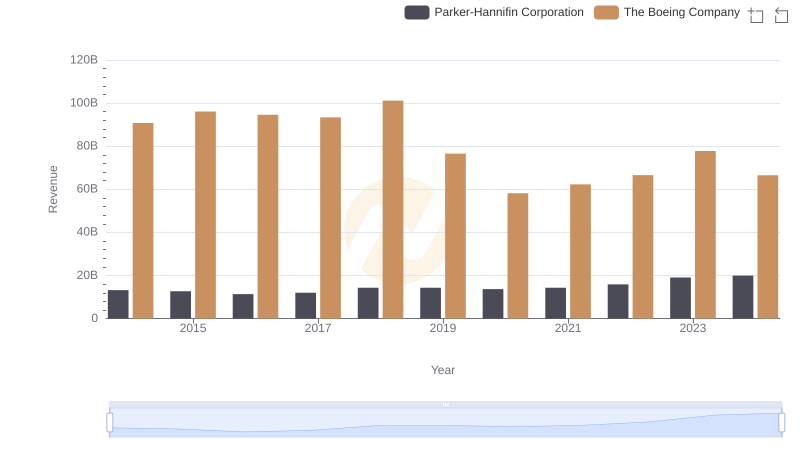
Revenue Showdown: The Boeing Company vs Parker-Hannifin Corporation
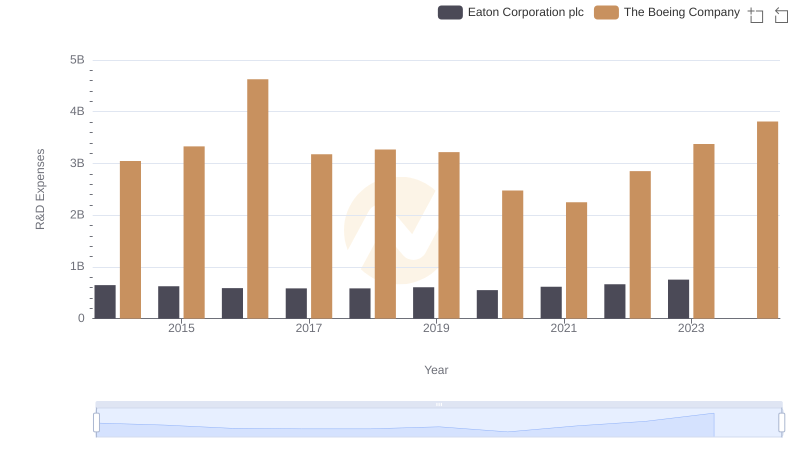
The Boeing Company vs Eaton Corporation plc: Strategic Focus on R&D Spending
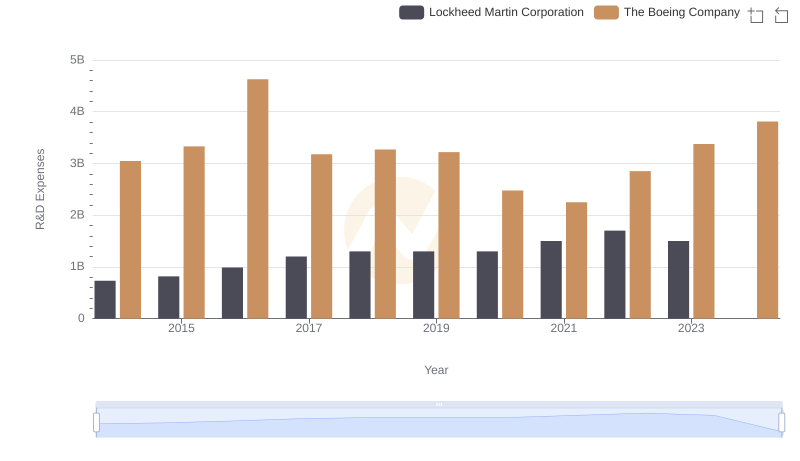
Research and Development: Comparing Key Metrics for The Boeing Company and Lockheed Martin Corporation
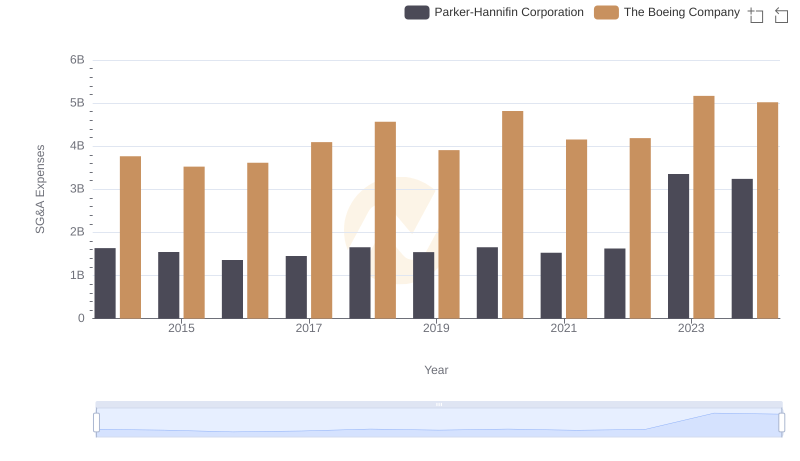
The Boeing Company and Parker-Hannifin Corporation: SG&A Spending Patterns Compared
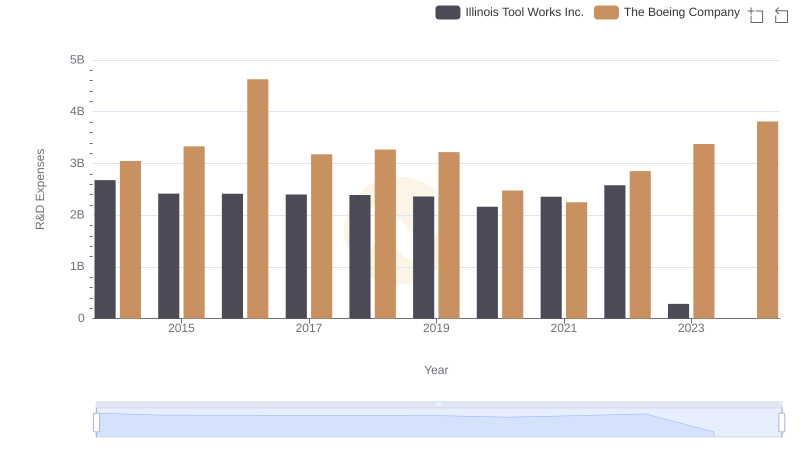
R&D Spending Showdown: The Boeing Company vs Illinois Tool Works Inc.
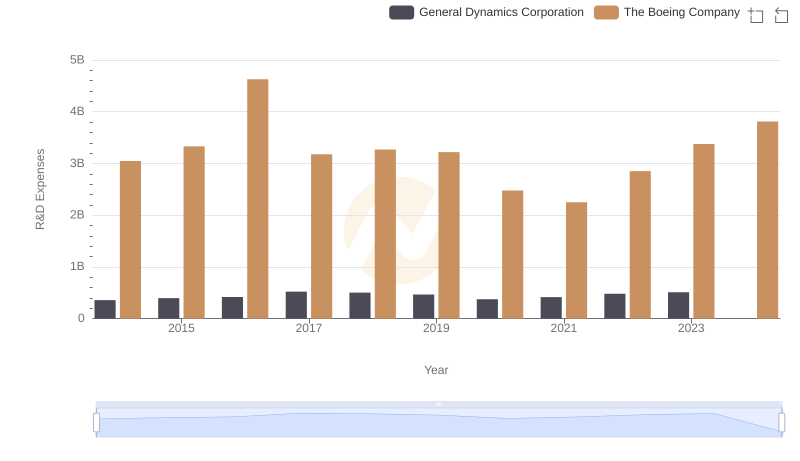
The Boeing Company or General Dynamics Corporation: Who Invests More in Innovation?
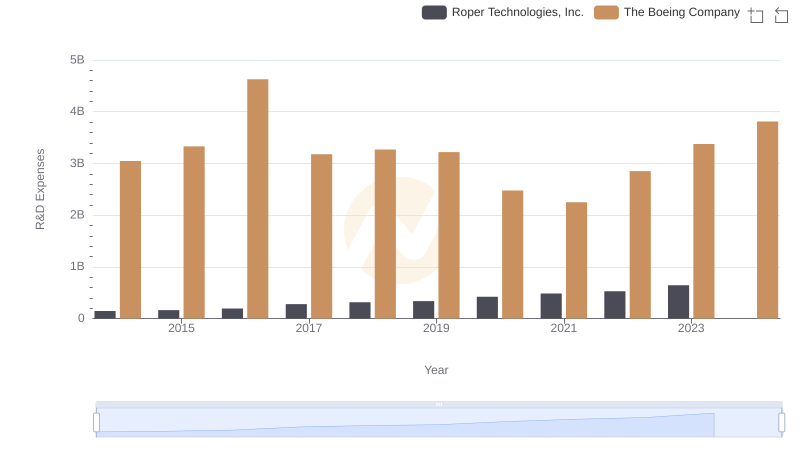
The Boeing Company or Roper Technologies, Inc.: Who Invests More in Innovation?
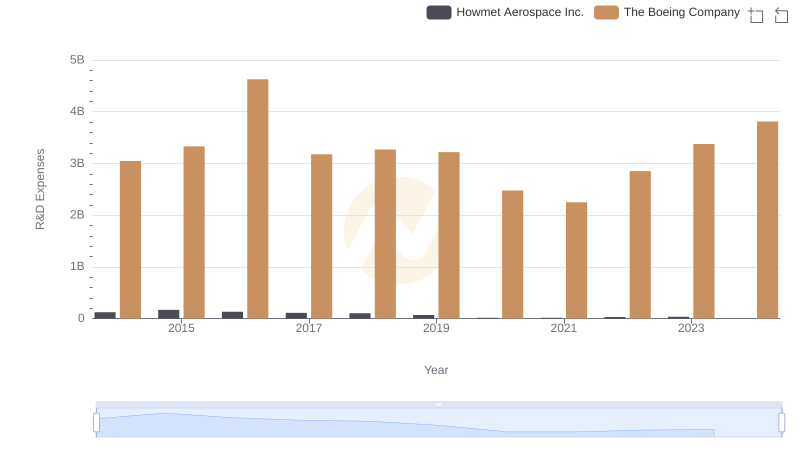
R&D Spending Showdown: The Boeing Company vs Howmet Aerospace Inc.